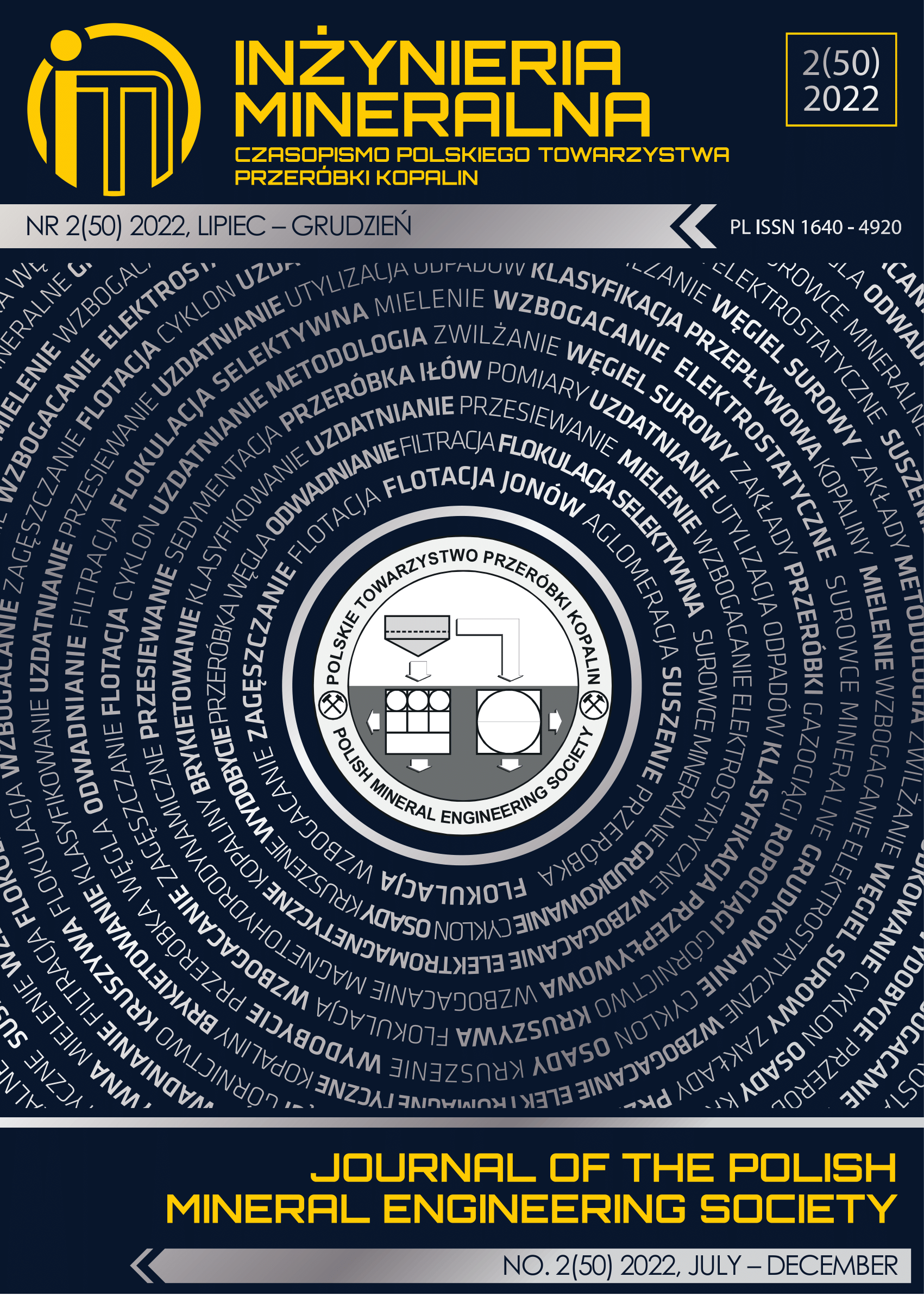Studies and Research on the Recovery of Copper from Industrial Waste Solutions by the Cementation Method
Abstract
The paper brings original contributions in the particularly complex field of copper recovery from industrial wastewater. The purpose of this experimental research is to recover copper metal powder from wastewater with low copper ion content, by the method of cementation using a scrap iron electrode and to calculate the yield of copper cementation, influenced by the following parameters: initial concentrations of copper ions, pH values and contact time. Recipes were experimentally studied by the cementation method for the recovery of copper from industrially used solutions using iron waste, without consumption of other reagents or energy. Work recipes were designed and one chose three different concentrations: for each solution of prepared concentration: 0.5% CuSO4, 1% CuSO4 and 3% CuSO4, and one performed laboratory experiments at two types of pH (natural pH obtained by dissolving CuSO4*5H2O in water, pH=2 (adjustment with 0.1 M sulfuric acid solution). The optimal conditions for each recipe have been identified, based on the experimental data obtained from the monitoring of each experiment, to the WTW Multi 350i multiparameter and AAS ZEEnit 700 Analytik Jena spectrometer. The calculation of the yield of obtaining copper powder for each day of the experiment and for each recipe together, the other experimental data led us to the conclusion that the optimal variant for our study is: concentration of 0.5%, at an initial pH of 3.6 after 3 days of experiment and yield of 95.23%.
This journal permits and encourages authors to post items submitted to the journal on personal websites or institutional repositories both prior to and after publication, while providing bibliographic details that credit, if applicable, its publication in this journal.







.png)
